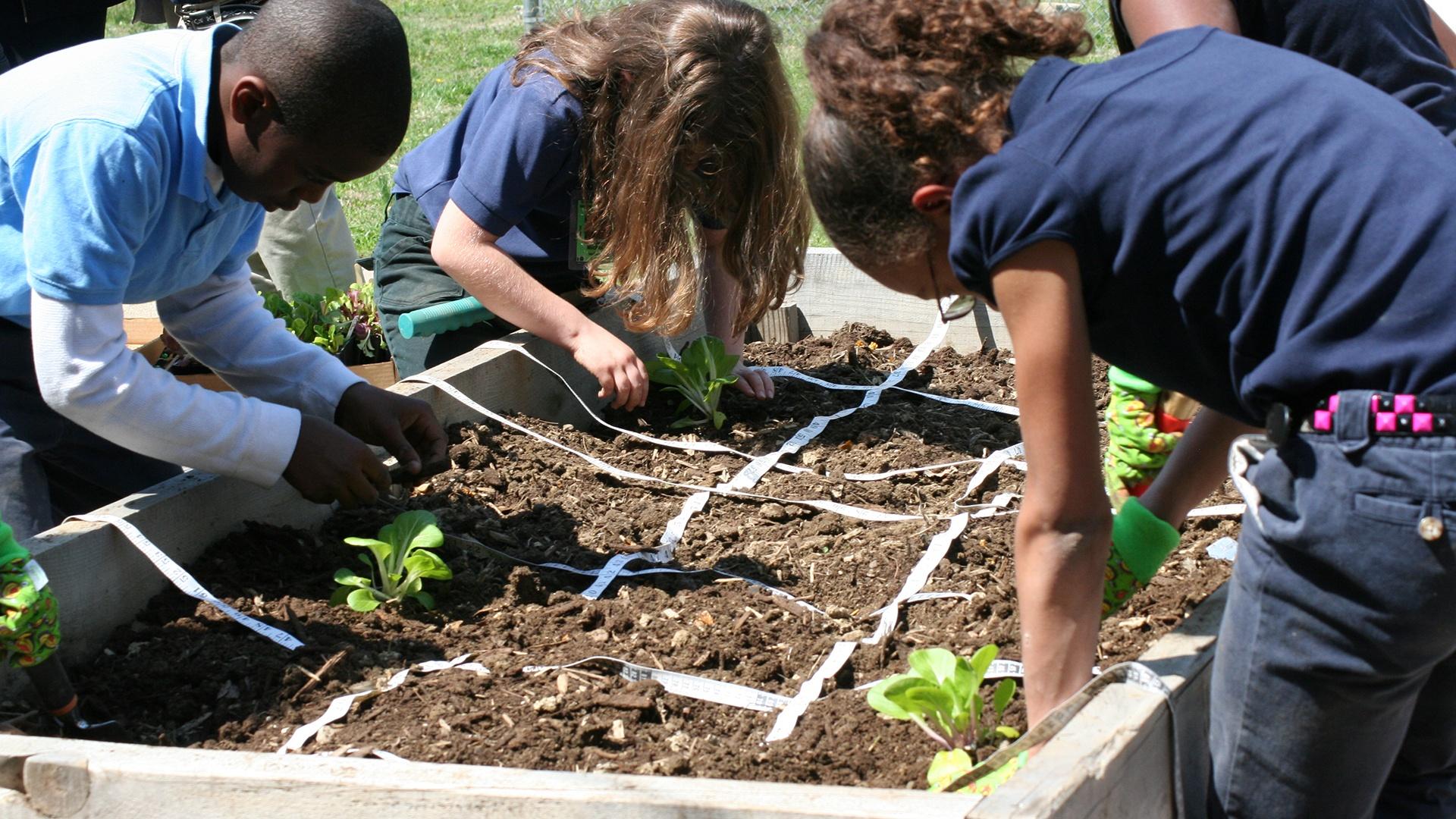Cultivating Change: Exploring Sustainable Community Gardening Projects for a Greener Future
In an era defined by environmental consciousness and a growing desire for community connection, sustainable community gardening projects are blossoming as powerful tools for positive change. More than just patches of cultivated land, these gardens represent a holistic approach to urban and rural development, fostering ecological balance, social cohesion, and individual well-being. This article delves into the multifaceted world of sustainable community gardening, exploring its benefits, key principles, practical implementation strategies, and inspiring examples from around the globe.
What is Sustainable Community Gardening?
At its core, sustainable community gardening involves a group of people collaboratively cultivating a shared piece of land using environmentally friendly practices. This goes beyond simply growing food; it encompasses a commitment to preserving natural resources, minimizing waste, and promoting biodiversity. It’s about creating a space where the community can come together, learn from each other, and contribute to a healthier planet.
Unlike traditional gardening, which may rely on synthetic fertilizers and pesticides, sustainable community gardens prioritize organic methods. This includes composting, using natural pest control techniques, and conserving water. The focus is on creating a closed-loop system where resources are recycled and waste is minimized.
The Multifaceted Benefits of Community Gardens
The advantages of sustainable community gardening extend far beyond the tangible benefits of fresh produce and beautiful green spaces. These gardens act as catalysts for positive change on multiple levels:
Environmental Benefits
- Reduced Carbon Footprint: By growing food locally, community gardens reduce the need for transportation, processing, and packaging, thereby lowering carbon emissions.
- Improved Soil Health: Sustainable gardening practices, such as composting and cover cropping, enhance soil fertility and structure, leading to healthier plants and reduced erosion.
- Increased Biodiversity: Community gardens provide habitats for pollinators, birds, and other beneficial wildlife, contributing to a more diverse and resilient ecosystem.
- Stormwater Management: Green spaces help absorb rainwater, reducing runoff and the risk of flooding.
- Urban Heat Island Effect Mitigation: Vegetation helps cool urban areas by providing shade and releasing water vapor into the atmosphere.
Social Benefits
- Community Building: Gardening together fosters a sense of belonging and shared purpose, strengthening social bonds and creating a more connected community.
- Increased Access to Fresh, Healthy Food: Community gardens provide access to affordable, nutritious produce, particularly for low-income communities with limited access to grocery stores.
- Educational Opportunities: Gardens serve as living classrooms, providing opportunities to learn about gardening, nutrition, and environmental sustainability.
- Improved Mental and Physical Health: Studies have shown that gardening can reduce stress, improve mood, and increase physical activity.
- Intergenerational Connections: Gardens bring together people of all ages, allowing for the sharing of knowledge and experiences between generations.
Economic Benefits
- Reduced Food Costs: Growing your own food can significantly reduce grocery bills, especially for families on a tight budget.
- Job Creation: Community gardens can create employment opportunities in areas such as garden management, education, and food processing.
- Increased Property Values: Green spaces can enhance the aesthetic appeal of neighborhoods, leading to increased property values.
- Local Economic Development: Community gardens can support local farmers and businesses by providing a market for their products and services.
Key Principles of Sustainable Community Gardening
To ensure that community gardens truly contribute to a more sustainable future, it’s essential to adhere to certain core principles:
1. Soil Health
Healthy soil is the foundation of any successful garden. Sustainable practices for maintaining soil health include:
- Composting: Recycling organic waste into nutrient-rich compost to improve soil fertility.
- Cover Cropping: Planting specific crops to protect and enrich the soil during fallow periods.
- No-Till Gardening: Minimizing soil disturbance to preserve soil structure and beneficial microorganisms.
- Soil Testing: Regularly testing the soil to determine its nutrient content and pH level.
2. Water Conservation
Water is a precious resource, and sustainable gardens prioritize its efficient use:
- Rainwater Harvesting: Collecting rainwater in barrels or cisterns for irrigation.
- Drip Irrigation: Delivering water directly to plant roots to minimize evaporation.
- Mulching: Applying organic mulch to retain soil moisture and suppress weeds.
- Choosing Drought-Tolerant Plants: Selecting plants that are well-suited to the local climate and require minimal watering.
3. Pest and Disease Management
Sustainable gardens rely on natural methods to control pests and diseases:
- Companion Planting: Planting specific combinations of plants that repel pests or attract beneficial insects.
- Beneficial Insects: Introducing or attracting beneficial insects, such as ladybugs and lacewings, to prey on pests.
- Crop Rotation: Rotating crops each season to disrupt pest and disease cycles.
- Organic Pest Control Products: Using natural pesticides, such as neem oil and insecticidal soap, as a last resort.
4. Biodiversity
Promoting biodiversity is essential for creating a resilient and healthy garden ecosystem:
- Planting a Variety of Crops: Growing a diverse range of fruits, vegetables, and herbs to attract pollinators and beneficial insects.
- Creating Habitat for Wildlife: Providing shelter and food sources for birds, butterflies, and other wildlife.
- Avoiding Monoculture: Avoiding planting large areas with a single crop, which can make the garden more vulnerable to pests and diseases.
5. Waste Reduction
Sustainable gardens strive to minimize waste through composting, recycling, and reuse:
- Composting: Recycling food scraps, yard waste, and other organic materials into compost.
- Recycling: Recycling plastic pots, containers, and other materials.
- Reusing Materials: Reusing materials such as old tires, pallets, and bottles to create garden beds and structures.
Practical Implementation Strategies
Turning the vision of a sustainable community garden into reality requires careful planning and execution. Here are some practical strategies to guide the process:
1. Forming a Community Group
The first step is to gather a group of interested individuals who are passionate about gardening and community development. This group will serve as the foundation for the garden and will be responsible for planning, organizing, and maintaining the space.
2. Identifying a Suitable Location
Finding a suitable location is crucial for the success of the garden. Consider factors such as sunlight, water access, soil quality, and proximity to the community. Public parks, vacant lots, and school grounds are all potential locations.
3. Developing a Garden Plan
A well-defined garden plan will help guide the development and management of the garden. The plan should include information on the garden’s layout, the types of crops to be grown, the gardening methods to be used, and the rules and responsibilities of the gardeners.
4. Securing Funding and Resources
Community gardens often require funding and resources to cover costs such as soil amendments, tools, seeds, and water. Explore potential funding sources such as grants, donations, and fundraising events. In-kind donations of materials and labor can also be valuable.
5. Building the Garden
Once the plan is in place and resources are secured, it’s time to start building the garden. This may involve clearing the land, building raised beds, installing irrigation systems, and constructing fences or other structures.
6. Engaging the Community
Community engagement is essential for the long-term success of the garden. Organize workshops, events, and volunteer opportunities to involve community members in the garden and foster a sense of ownership.
7. Maintaining the Garden
Regular maintenance is crucial for keeping the garden healthy and productive. This includes weeding, watering, fertilizing, and harvesting crops. Establish a schedule for garden maintenance and ensure that all gardeners contribute to the effort.
Inspiring Examples of Sustainable Community Gardens
Numerous successful sustainable community gardens around the world demonstrate the transformative power of these initiatives. Here are a few inspiring examples:
1. The Edible Schoolyard Project (Berkeley, California)
Founded by chef Alice Waters, The Edible Schoolyard Project integrates gardening and cooking into the school curriculum, teaching students about sustainable agriculture, nutrition, and environmental stewardship. The project has inspired similar initiatives in schools around the world.
2. Growing Power (Milwaukee, Wisconsin)
Growing Power is an urban agriculture organization that operates a network of community gardens, greenhouses, and aquaponics systems. The organization provides job training, food access, and educational programs to low-income communities.
3. City Sprouts (Omaha, Nebraska)
City Sprouts is a non-profit organization that supports a network of community gardens throughout Omaha. The organization provides resources, training, and technical assistance to gardeners, helping them grow healthy food and build strong communities.
4. The Guerrilla Gardeners (Worldwide)
Guerrilla gardeners are activists who cultivate land that they do not have legal rights to, often in neglected or abandoned areas. Their actions are intended to beautify urban spaces, promote sustainable agriculture, and challenge conventional notions of land ownership.
5. Food is Free Project (Austin, Texas)
The Food is Free Project encourages people to grow food in their front yards and share it with their neighbors. The project aims to create a culture of sharing and reduce food waste.
Challenges and Solutions
While sustainable community gardening offers numerous benefits, it’s important to acknowledge the challenges that can arise and develop strategies to overcome them:
Challenge: Land Access
Solution: Partner with local governments, schools, or community organizations to secure access to land. Explore options such as leasing, land trusts, or community land ownership.
Challenge: Funding
Solution: Develop a diversified funding strategy that includes grants, donations, fundraising events, and in-kind contributions. Seek sponsorships from local businesses.
Challenge: Volunteer Recruitment and Retention
Solution: Make volunteering fun and rewarding by offering training, social events, and opportunities for personal growth. Clearly define volunteer roles and responsibilities.
Challenge: Pest and Disease Management
Solution: Implement integrated pest management strategies that include crop rotation, companion planting, and beneficial insects. Use organic pest control products as a last resort.
Challenge: Water Scarcity
Solution: Implement water conservation techniques such as rainwater harvesting, drip irrigation, and mulching. Choose drought-tolerant plants.
Challenge: Soil Contamination
Solution: Test the soil for contaminants before planting. If contaminants are present, consider using raised beds or container gardening with clean soil.
The Future of Sustainable Community Gardening
As cities become increasingly urbanized and concerns about food security and climate change grow, sustainable community gardening is poised to play an even more important role in creating healthier, more resilient communities. Innovations in urban agriculture, such as vertical farming and hydroponics, are expanding the possibilities for growing food in urban environments.
Technology is also playing a role in advancing sustainable community gardening. Smart gardening systems can monitor soil moisture, temperature, and nutrient levels, allowing gardeners to optimize their growing practices. Online platforms can connect gardeners with resources, information, and other members of the community.
Ultimately, the future of sustainable community gardening depends on the continued commitment of individuals, communities, and organizations to creating a more sustainable and equitable world. By working together, we can cultivate change and build a greener future for all.
Conclusion
Sustainable community gardening projects are more than just a trend; they represent a fundamental shift towards a more sustainable and equitable way of life. By embracing the principles of environmental stewardship, social cohesion, and individual well-being, these gardens are transforming communities around the world. From reducing carbon emissions and improving soil health to fostering community bonds and providing access to fresh, healthy food, the benefits of sustainable community gardening are far-reaching and profound. As we face the challenges of climate change and urbanization, these gardens offer a powerful model for creating a more resilient and sustainable future.



